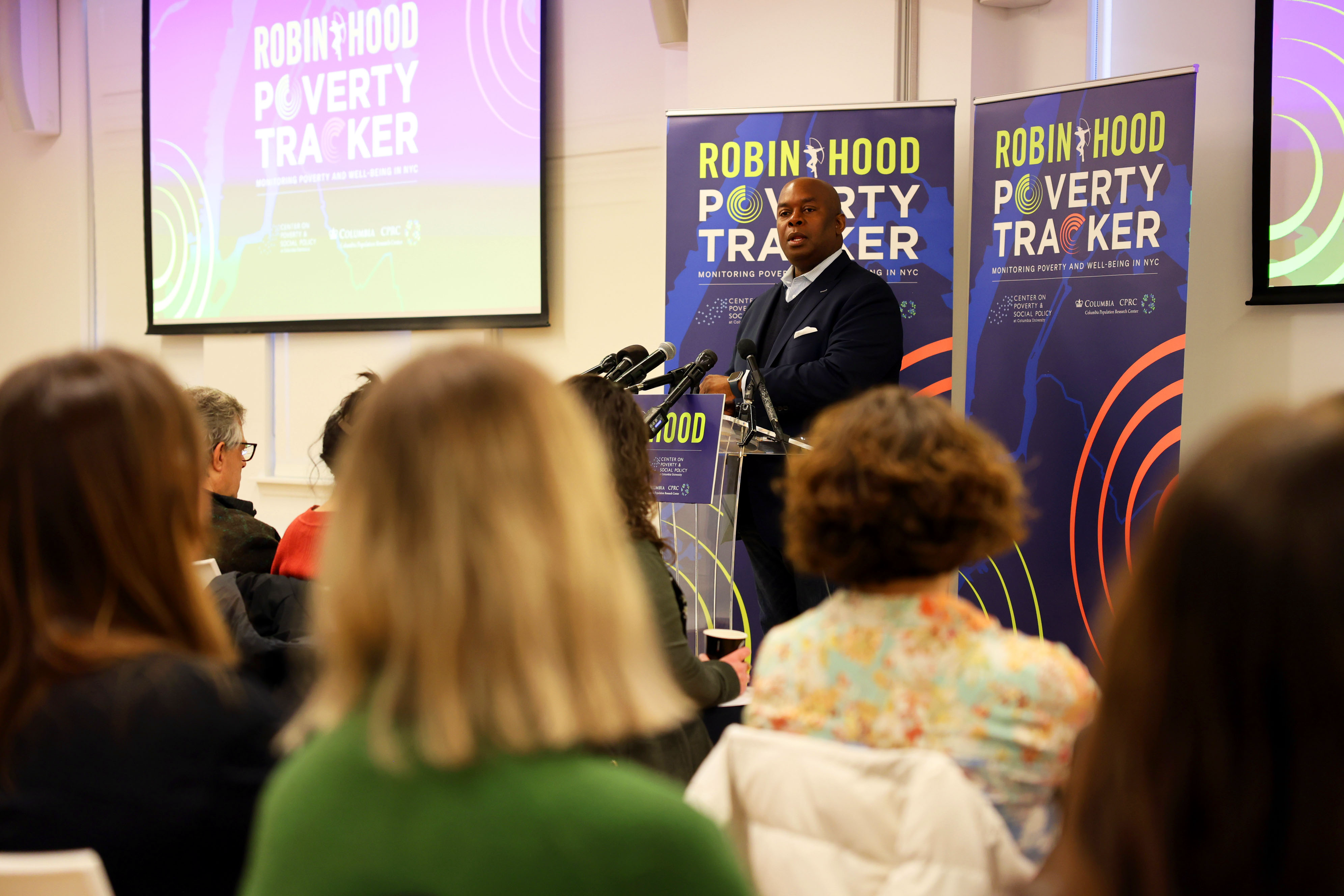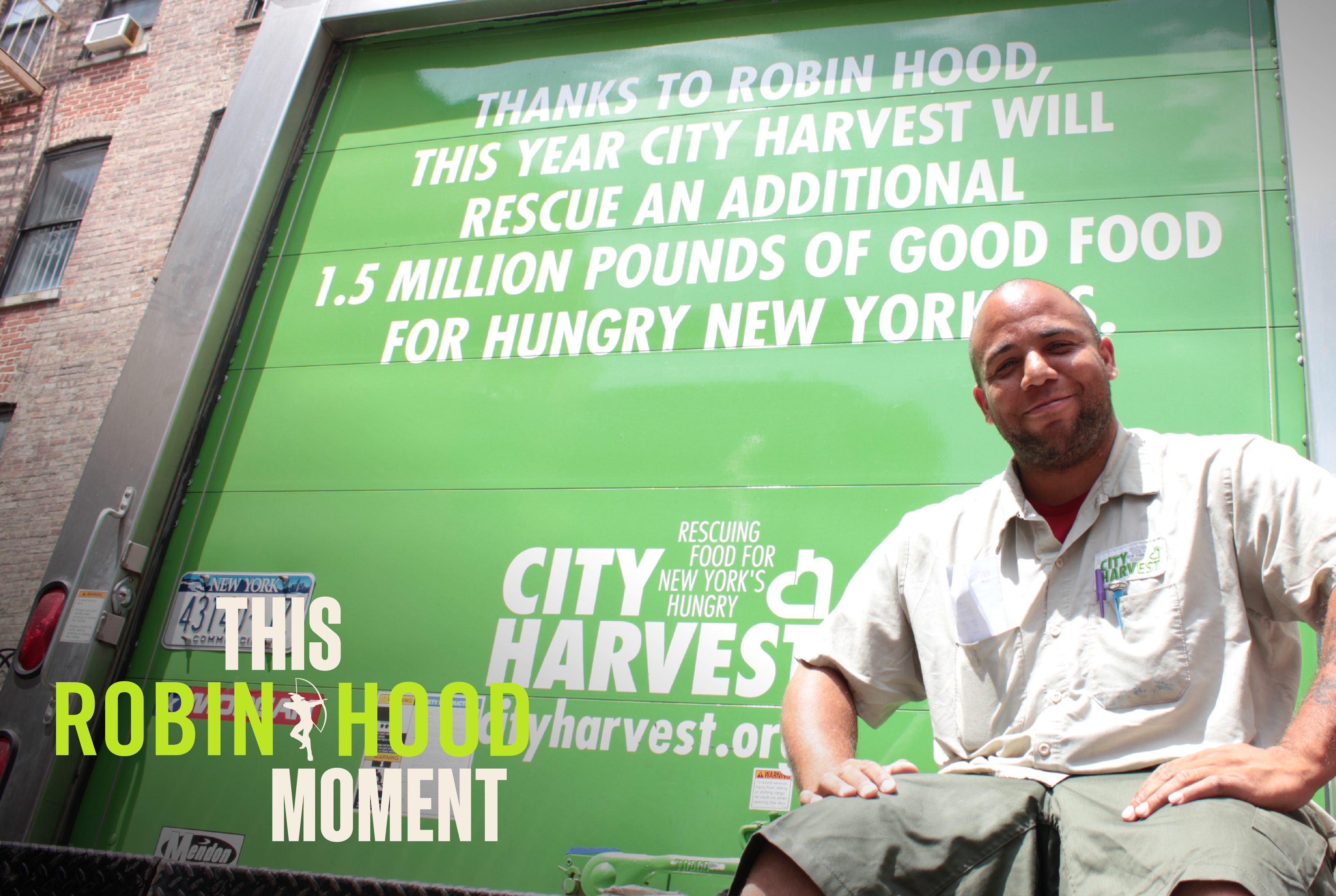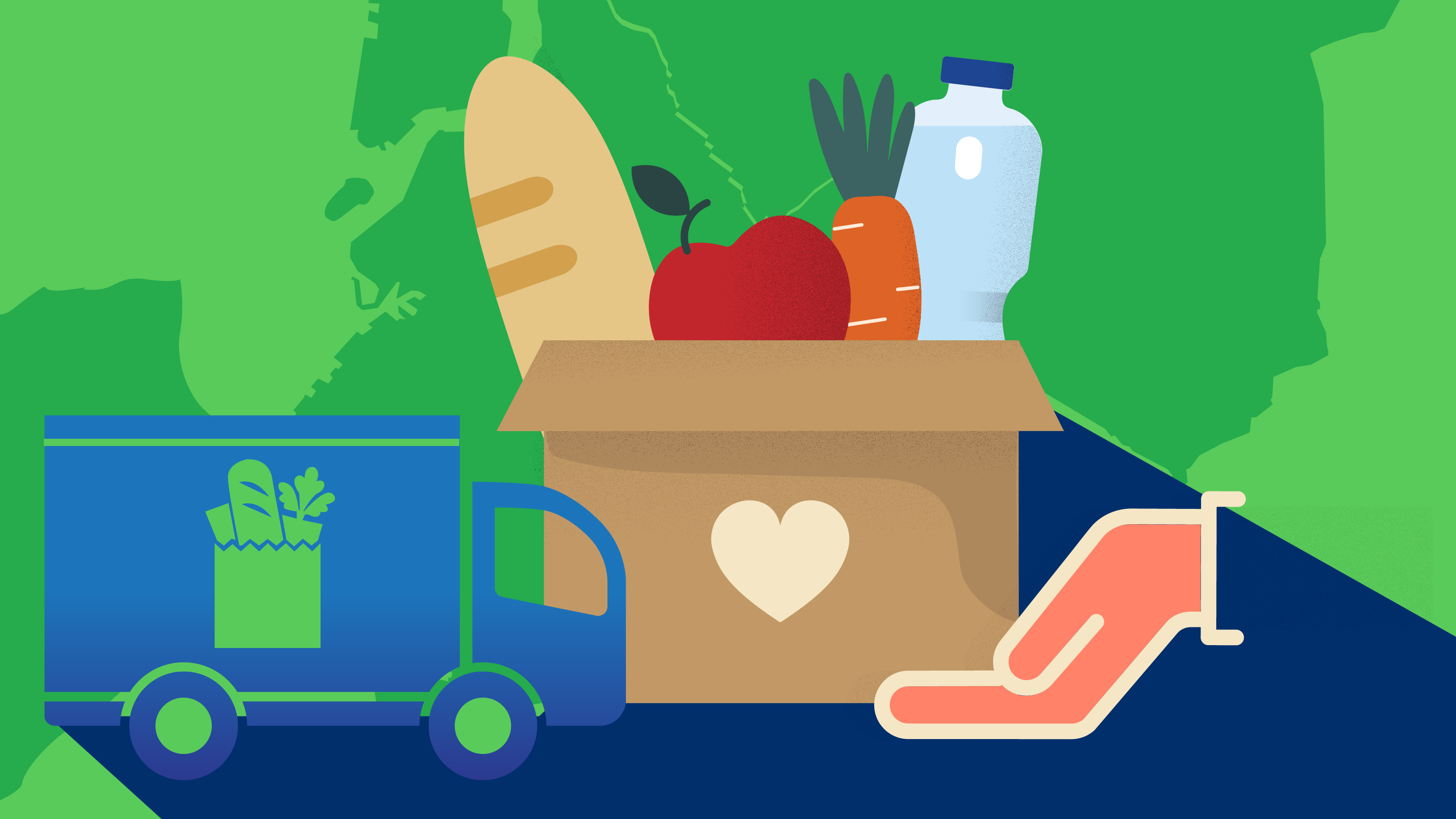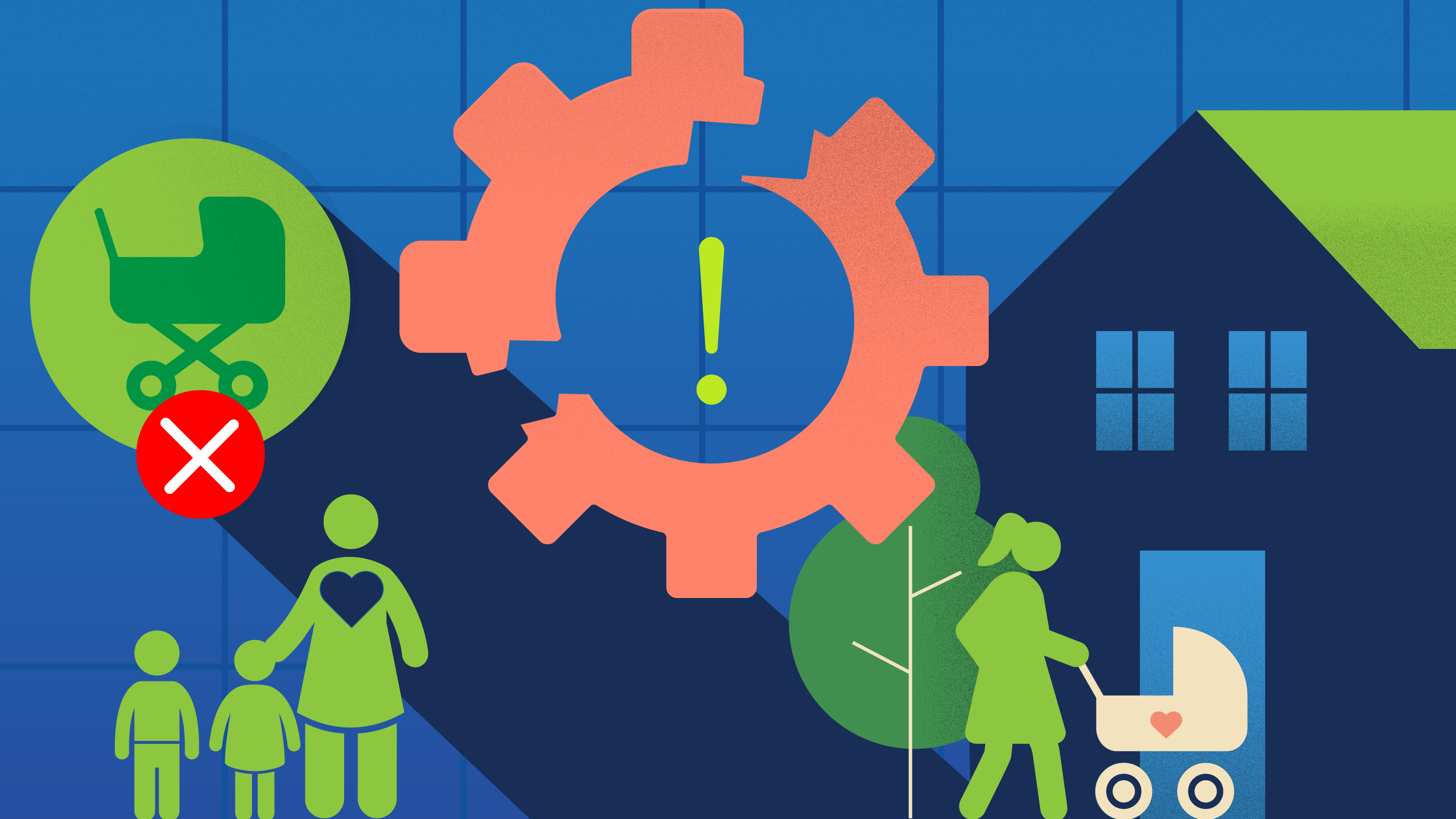Feb 21, 2024 Press Release
New Poverty Tracker Report Finds 2 Million New Yorkers Now Living in Poverty
Report observes largest single-year increase (from 2021-2022) in the citywide poverty rate since the Poverty Tracker began its study in 2012. More than half of New York City—56%—lives in poverty or is low-income and likely faces challenges to make ends meet.
NEW YORK, NY — Today, Robin Hood, in collaboration with Columbia University’s Center on Poverty and Social Policy, released its sixth Poverty Tracker Annual Report, which assesses rates of income poverty, material hardship, and economic disadvantage across New York City in 2022. The report was presented at the historic Grand Street Settlement, a nonprofit organization providing critical safety net services and expanding opportunities for low-income New Yorkers since 1916. This year’s report documents a sharp, historic increase in poverty and hardship across New York City.
Among the report’s findings, the number of New Yorkers living in poverty grew from 1.5 million to 2 million between 2021 and 2022, with nearly 500,000 more people in New York living in poverty than the year prior. This translates to an increase in the poverty rate from 18% in 2021 to 23% in 2022 and puts the city’s poverty rate at nearly double the national average (12%). This is the largest single-year increase in the citywide poverty rate since the Poverty Tracker research group began collecting data in 2012.
“Our city is in the midst of an affordability crisis. Alarmingly, this year’s annual Poverty Tracker report observes the sharpest one-year increase in poverty we’ve found since launching the study in 2012. This would be deeply troubling at any point, but it is particularly disturbing given the steady progress New York City has made to reduce poverty in years prior — including during the pandemic, where 500,000 children avoided poverty thanks to temporary, stabilizing government policies,” said Richard R. Buery Jr, CEO of Robin Hood. “We know that fully refundable tax credits, housing vouchers, and childcare subsidies can move millions out of poverty and hardship. But we have lacked the will to keep these policies in force. We are calling on lawmakers to make investments that will help our neighbors live lives of opportunity.”
Key findings from the report include:
- Between 2021 and 2022, the number of New Yorkers living in poverty grew from 1.5 million to 2 million, with nearly 500,000 more people in New York living in poverty than the year prior.
- The overall poverty rate increased from 18% to 23%.
- The child poverty rate jumped by 66% – rising from 15% to 25%.
- Most of the city’s population (56%) lives in poverty or with low incomes.
- Poverty in New York City is nearly twice as high (23%) as the national poverty rate (12%)
- Latino New Yorkers were twice as likely to live in poverty compared to white New Yorkers (26% vs. 13%); poverty rates were similarly elevated among Asian and Black New Yorkers (24% and 23%, respectively).
The findings show that the steady progress to reduce poverty over the last decade and through the pandemic is reversing. Pandemic-era policies stabilized life for many, but as benefits expired, hardship and poverty became more widespread. These policy shifts, coupled with soaring rent prices, historically elevated levels of inflation, and the rising costs of basic needs made it nearly impossible to make ends meet, much less withstand the financial shocks brought on in this economic climate.
“2022 saw some of the city’s hard-won reductions in poverty and hardship of recent years reversed, at the same time that inflation and high rents took a toll on people’s wallets,” said Christopher Wimer, director of The Center on Poverty and Social Policy at Columbia University. “The news is certainly grim, but if there is a silver lining it is that recent years have proven that well-designed policies can and do reduce poverty dramatically. We know what works, it’s just a matter of doing it.”
This year’s Poverty Tracker report includes a special spotlight on the city’s affordability crisis – which presents challenges for all New Yorkers, but especially for those with incomes below and hovering above the poverty line. For a renting household with two adults and two children in New York City, the Supplemental Poverty Measure, or poverty line, is $43,890. This figure represents what is needed to afford a minimal basic standard of need, but many would argue this figure is too low. Rather, observing the threshold at 200% of the poverty line – or $87,780 for a renting family of four – is a more accurate representation of an income level whereby families can afford a decent standard of living.
Additional findings from the Affordability Spotlight of this year’s Annual Poverty Tracker report include:
- More than half of all New Yorkers—4.6 million people—fall below this 200% threshold.
- People living 200% of the poverty line were at least twice as likely to struggle to pay for housing, bills, and food as those living above this line.
- 1-in-5 low-income New Yorkers report living paycheck-to-paycheck.
“This important report from Robin Hood and Columbia University shows us that families need support to move from simply surviving to truly thriving. One hundred percent of the 18,000 New Yorkers we serve at Grand Street are low income due to low wage jobs, inflation, and the cost of quality childcare & housing. A clear path out of poverty requires a stronger safety net— and a policy of real investment in families with universal childcare. We know what works. New York can lead the way in creating social and economic opportunities for families by addressing these root causes of poverty,” said Roberto Cordero, executive director of Grand Street Settlement.
Over the years, the Poverty Tracker has found that government policy effectively fights poverty. In 2021, for example, the temporarily expanded federal Child Tax Credit alone reduced child poverty in New York City by more than 30%. Robin Hood will continue to call on lawmakers to deliver workable permanent solutions that address the urgent needs of individuals and families across New York. Strengthening the Empire State Child Tax Credit (ESCC) could move over 100,000 children out of poverty. Making housing more affordable by increasing supply and establishing the Housing Access Voucher Program (HVAP) could serve 14,000 households statewide. Decoupling childcare from a parent’s number of work hours will make childcare more accessible for the hundreds of thousands of the lowest income New Yorkers getting by with jobs in a growing gig economy.
Since 2012, the Poverty Tracker has surveyed a representative sample of 3,000 New York households every three months, providing critical information on the dynamics of poverty and other forms of disadvantage in the city while tracking data on employment, assets and debts, and health. The Poverty Tracker has monitored the impacts that COVID-19 and the related economic downturn have had on life in New York City since the onset of the pandemic.
###
About Robin Hood:
Robin Hood is New York’s largest local poverty-fighting philanthropy. Last year, Robin Hood celebrated its 35th year of funding, supporting, and connecting New York’s most impactful community organizations at the forefront in the battle against poverty. We are NYC’s largest local poverty-fighting philanthropy and since 1988, we have invested nearly $3 billion to elevate and fuel the permanent escape of New Yorkers from poverty. In 2023, through grantmaking with 250+ community partners, we created pathways to opportunities out of poverty through our strategic partnerships on childcare, child poverty, jobs, and living wages. We are scaling impact at a population level for the nearly 2 million New Yorkers living in poverty. At Robin Hood, we believe your starting point in life should not define where you end up. To learn more about our work and impact, follow us on X @RobinHoodNYC or go to www.robinhood.org.
About Columbia University’s Center on Poverty and Social Policy:
The Center on Poverty and Social Policy at the Columbia School of Social Work produces cutting-edge research to advance our understanding of poverty and the role of social policy in reducing poverty and promoting opportunity, economic security, and individual and family-wellbeing. The Center’s work focuses on poverty and social policy issues in New York City and the United States. www.povertycenter.columbia.edu
About Grand Street Settlement:
Grand St. Settlement was founded in 1916 by Rose Gruening to serve the immigrant and poor residents of Lower Manhattan. Four decades ago, Grand Street strategically expanded programs to Brooklyn in response to community needs. Across 50+ community centers, schools, and partnership sites, Grand Street’s families can access a wealth of programs that provide the resources and strategies for success: high-quality early education and childcare, safety net support and access to benefits, hands-on afterschool and summer learning, and a vibrant and supportive community for local seniors. www.grandsettlement.org
MEDIA CONTACT
Crystal Cooper, Deputy Director of Communications
press@robinhood.org



